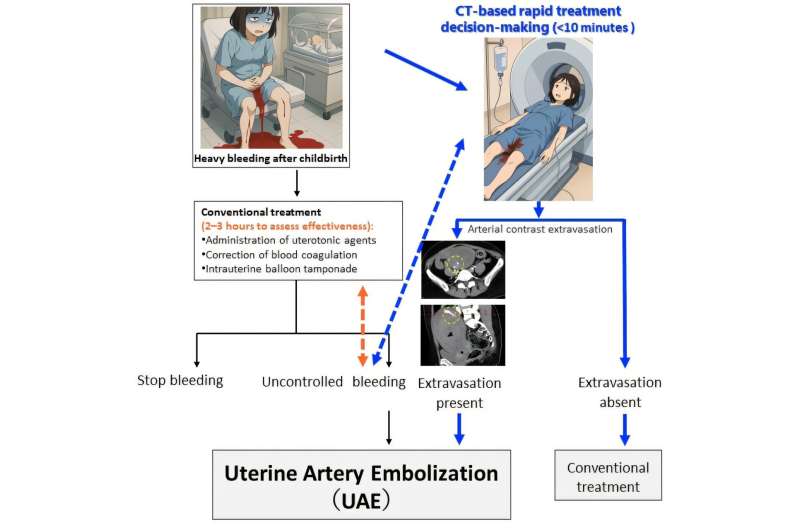The new finding, termed PRACE (Postpartum hemorrhage, Resistance to treatment, and Arterial Contrast Extravasation), was observed in nearly one-third of patients undergoing dynamic CT scans and was strongly associated with the need for emergency procedures such as uterine artery embolization. The study is published in JAMA Network Open.
Postpartum hemorrhage remains a leading cause of maternal death worldwide. While most cases can be managed with medications and basic interventions, a significant number become life-threatening and require more invasive treatment. Until now, there has been no reliable way to identify in advance which cases would prove resistant to standard therapies.
In a nationwide study involving 43 advanced medical centers across Japan, researchers analyzed 352 cases of severe PPH and found that 205 underwent dynamic CT scanning. Of these, 58 cases (32.2%) showed the PRACE pattern, characterized by contrast agent leaking into the uterine cavity during the early phase of imaging—signaling active arterial bleeding.

